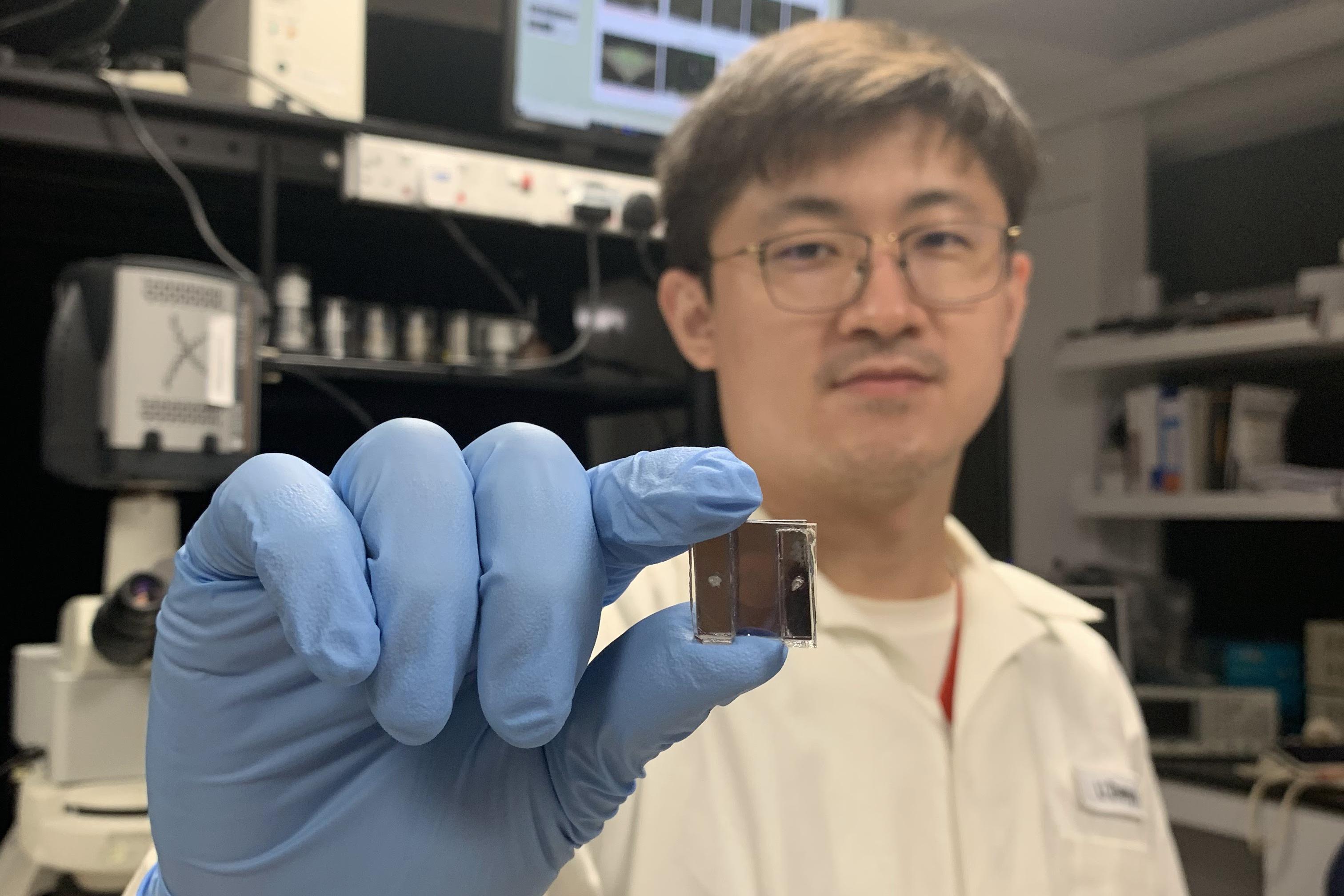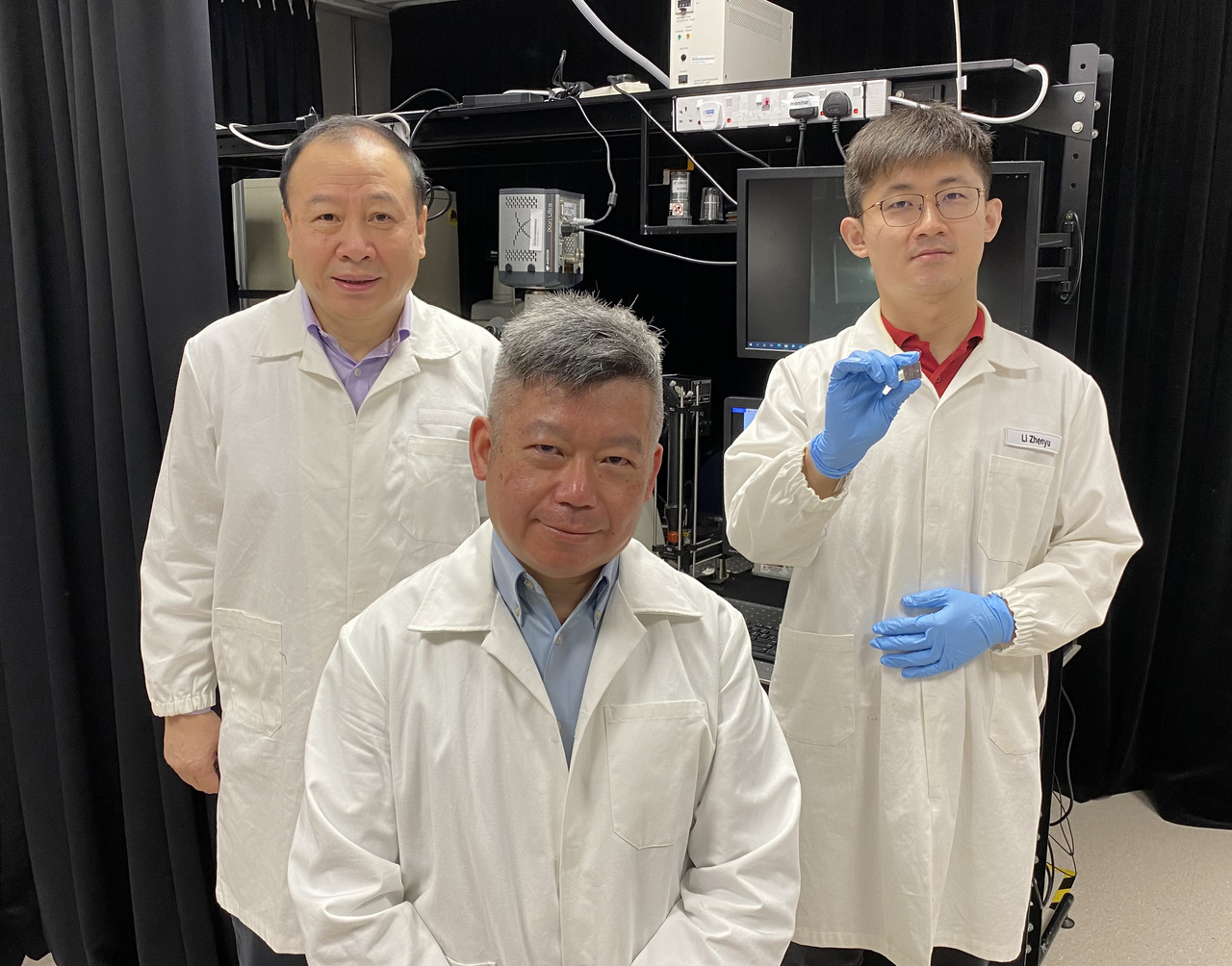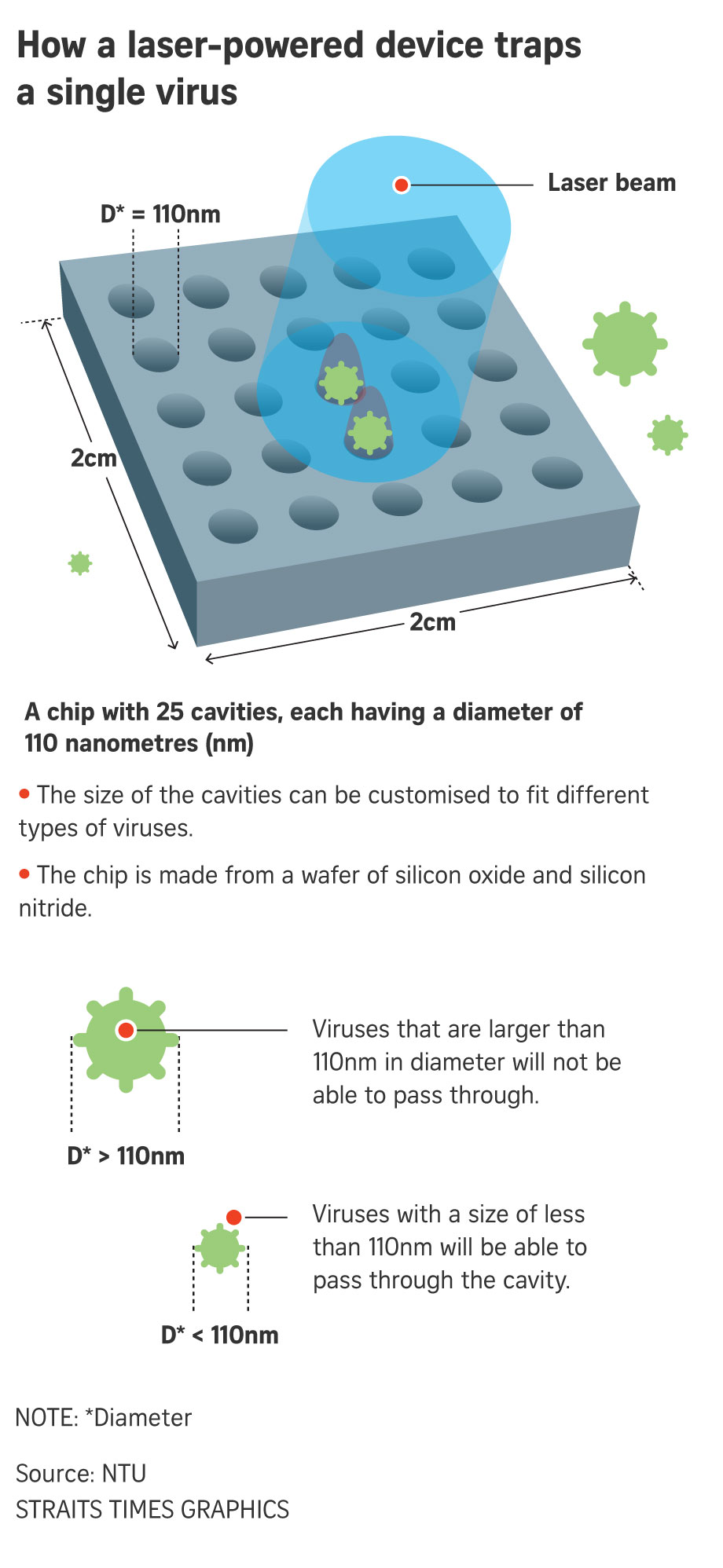NTU creates the first laser-powered device able to trap and move a single virus
Sign up now: Get ST's newsletters delivered to your inbox

NTU’s School of Electrical and Electronic Engineering research fellow Li Zhenyu holding up the NTU-invented digital virus manipulation chip.
PHOTO: NTU SINGAPORE
Follow topic:
SINGAPORE - In a first of its kind, a laser-powered device that can trap and move a single virus around using light has been created in Singapore.
The device is able to trap, transport and sort viruses of different sizes and types. So far, it has been proven to work on adenoviruses - a group of common viruses measuring 90 to 120 nanometre (nm) in diameter that can cause cold-like symptoms.
Adenoviruses are of similar size to Sars-CoV-2, which causes Covid-19.
Created by a team of scientists led by Professor Liu Ai Qun from Nanyang Technological University (NTU)'s School of Electrical and Electronic Engineering and Associate Professor Eric Yap from NTU's Lee Kong Chian School of Medicine, the device consists of a 2cm by 2cm chip with 25 tiny cavities, each of them the size of a single virus - roughly half a million times smaller than a golf ball.
The size of these cavities can be altered to suit different types of viruses.
Above the chip is a laser shining light beams with the right amount of energy to force the virus into the chip's cavity. Only viruses that fit the cavities will be able to pass through. The whole process takes a few seconds.
A fluid that contains viruses, such as blood, is first loaded into the chip. A laser beam is then shone on it, forming spots of light. As the intensity of the light is highest in the centre of the spots, a strong force is created that attracts and traps a virus in one of the chip's cavities.
By shifting the light, viruses can be moved around the chip. This allows different types of viruses to be sorted and concentrated at different locations of the chip.
The device is able to sort viruses of diameters ranging from 40nm to 300nm.
A single virus can then be placed beside a cell to investigate what will happen to that cell, such as whether a single virus is sufficient to infect the cell, or if 10 or 50 viruses are needed to infect it, Prof Yap, a medical geneticist, said on Wednesday (Oct 27).
"This opens up avenues for viral studies that could not be done previously as we are now able to study single viruses," he added.
All these experiments can be done entirely on the chip.
If more than one type of virus is present, they can be labelled with different fluorescent dyes.
This discovery also has a huge potential in Covid-19 diagnosis.

The laser-powered device was created by a team of scientists including NTU's Lee Kong Chian School of Medicine Assoc Professor Eric Yap (centre).
PHOTO: NTU SINGAPORE
Currently, polymerase chain reaction tests, though very sensitive, is unable to distinguish between an active infection and an old infection, or between the different variants, Prof Yap noted.
"However, this chip can digitally count individual viruses, and distinguish between whole viruses that are present in active infections and residual RNA from previous infections."
The device took five years to build and was a breakthrough from over 20 years of collaboration between the photonics and the medicine faculties, two hugely different scientific fields and cultures, said Prof Liu.
Moving forward, they hope to use the digital virus chips to culture a wide variety of viruses, including Sars-CoV-2 viruses that currently require large biosafety level-3 lab facilities.
Asked if this would be in time for the current Covid-19 pandemic, Prof Yap noted that it would depend on partnerships and research funding.


